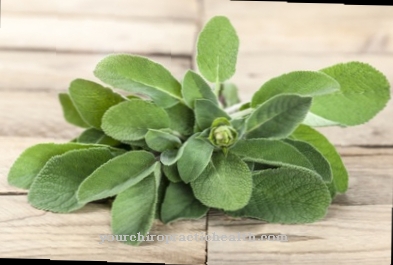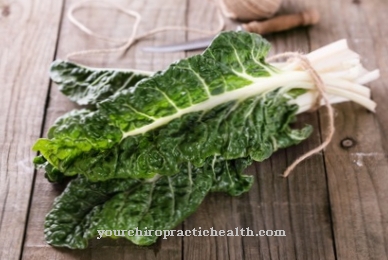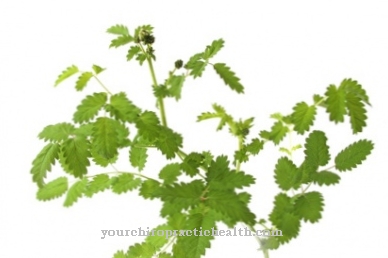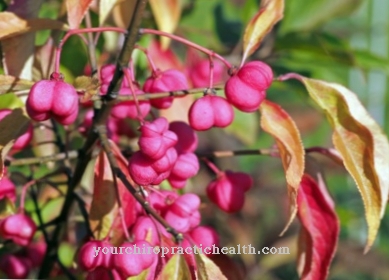Already in the times of the ancient Greeks, the linden was considered a tree of healers. In the Middle Ages, Hildegard von Bingen mentioned linden blossom water as a beauty product in her herbal books. In the small one Linden blossom there is more strength than is generally believed.
Occurrence and cultivation of the linden blossom

The linden tree (Latin name Tilia) is a widespread and popular deciduous tree. Their occurrence extends from the temperate to the subtropical areas. With the summer linden, the winter linden and the silver linden, three of the numerous known species feel at home in our latitudes. Linden trees are rarely found growing in the wild, they prefer to grow in places where they are planted by humans. They are very popular because of their shading effect in parks, in city centers or on streets and avenues.
The flowers of the summer linden tree (flowering time: May) are primarily used for medicinal purposes, although the winter linden tree (flowering time June / July) is in no way inferior to its sister in terms of its effects and healing properties. Only the silver linden is mostly used as an ornamental plant. The Linden blossom have a yellowish-greenish color and grow in hanging panicles on a bract that is used for flight purposes.
They contain numerous valuable ingredients such as tannins, mucilage, vitamin C, vitamin P, essential oils, flavon glycosides and saponins, which have a beneficial effect on the human organism. It is assumed that the individual ingredients complement each other in their effects. Because of the high sugar content of their nectar, linden blossoms are also valued by beekeepers.
Effect & application
The healing properties of the linden tree have been known for centuries. Originally, however, mainly the wood and the bark of the tree were used. It was only relatively late (around the 17th century) that the linden blossom itself found its way into medicine and has since become an indispensable part of home medicine.
The linden blossom is collected when it is in bloom. Their active ingredient is greatest around two to three days after the flower has opened. The flowers are then dried quickly and airily and processed after drying. Dried linden blossoms should be stored in dark, tightly closing jars as they are very sensitive to light and air. Linden blossom tea is probably well known as an old home remedy for colds. The tea has a pleasant aroma and is tasty. Linden blossoms are often added to other tea blends or made into tinctures.
Products made from linden blossom are equally suitable for external use such as compresses, baths or washes. The healing properties of the linden blossom are diverse and their range of uses therefore goes far beyond that of the tried and tested home remedy for coughs or colds. Not only does it have an expectorant, perspiration and diuretic effect, it is also calming, antispasmodic and relaxing. It also has a stomach-calming and blood-cleansing effect, and has an analgesic and anti-inflammatory effect.
Incidentally, linden blossom tea does not necessarily have to be drunk hot, as it does not lose its effect when it cools down. The cold tea quenches thirst and has a refreshing effect. Because of its mild taste, linden blossom tea can also be given to children without any problems. The interaction of the individual ingredients of the linden blossom has not yet been fully researched, but studies are already available today on some of their effects.
On the other hand, it has been proven that negative side effects are not to be expected either with the external or internal use of the corresponding products. In the doses tested so far (5,000 milligrams per kilo), the linden blossom is non-toxic.
Importance for health, treatment & prevention
The numerous positive effects that are known from the interaction of the individual ingredients also open up the possibility of using linden blossom products in a wide range. The flu can be “sweated out” with linden blossom tea. The tea provides relief for dry coughs or sore throats, as the ingredients lay like a protective cover on the mucous membranes, calming them down and supporting the defense against pathogens. Its strengthening effect on the immune system has been scientifically proven.
A cup of linden blossom tea can alleviate everyday complaints such as headaches or migraines. It relieves the pain and lets the migraines subside more quickly. People who suffer from difficulty falling asleep, however, should avoid reaching for tea before bed because of the sweat and diuretic effects. Instead, a bath with linden blossoms is recommended. It relieves tension, calms the nerves and has a beneficial effect even with anxiety.
In the case of increased blood pressure caused by stress, the linden blossom has a blood pressure lowering effect. The diuretic effect helps to reduce edema and relieve the metabolism. The tea is recommended for gout and rheumatism patients because of its anti-inflammatory and analgesic effects. The tea is also used for stomach and intestinal problems, heartburn, loss of appetite or mild abdominal cramps.
Linden blossom products have long been used in skin and beauty care. Linden blossom water relaxes and cleanses the skin of the face. Rinsing after shampooing makes the hair more supple and has a beneficial effect on the scalp. If the skin is reddened after extensive sunbathing, an appropriate compress will cool you down. Impure skin or pimples go away by inhaling an infusion made from linden blossom.
If the skin looks tired and poorly supplied with blood during the cold season, a compress can work small miracles. It promotes blood circulation and also removes one or the other "crease". The linden blossom has a wide range of health benefits. Their use cannot replace a visit to the doctor in the case of acute or long-lasting complaints, but it is useful in overcoming everyday complaints.
























.jpg)



